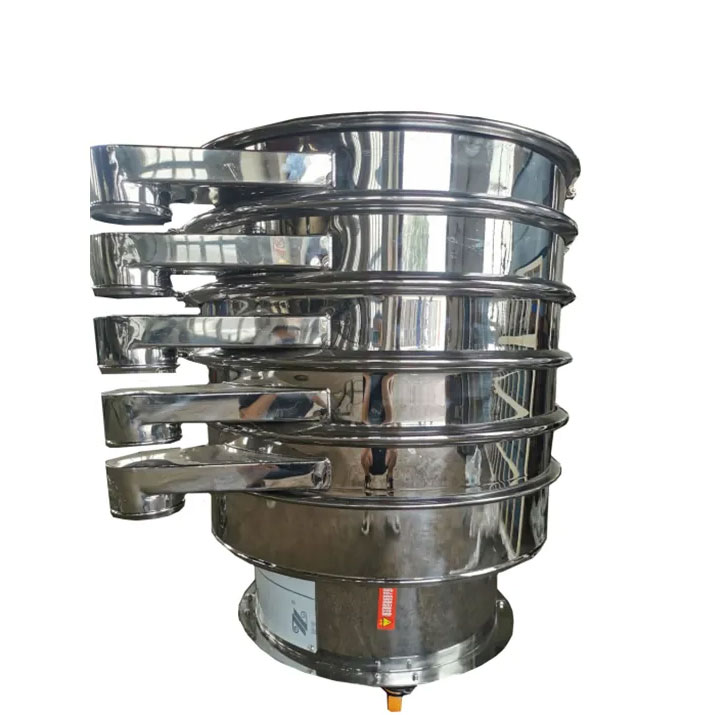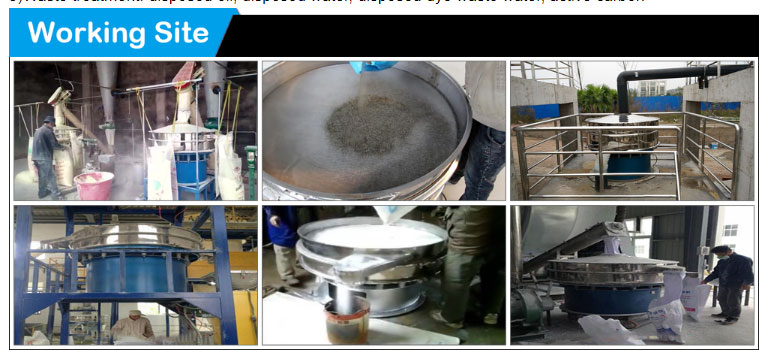A sieving machine is a device that separates particles of different sizes from each other through vibratory motion. It can be used to screen dry powder or granular products as well as wet products and liquids. This article will discuss the sieving machine with you.


1. Use sieving machine for grading
The vibrating sieving machine is capable of separating powders and granules from two to five different sizes/parts of product by installing one to four sieves of different aperture sizes. The largest particles/fractions are removed from the separator at the top sieve deck and the finest particles are removed from the lowest sieve cloth at the bottom, the mesh size can be 0.25-20.0mm.

A typical example of a one-layer dry sieving application is powdered sugar, which separates sugar lumps from the product prior to packaging in small consumer packaging. In this application, the product passing through the screen is the desired end product. Conversely, an example of a dog food goal is to remove too fine material, commonly known as dust, before packaging. In this application, a relatively small amount of dust/waste passes through the screen and the product exiting the top of the screen is a high quality end product. Both of the above situations can be said to be safety screening to ensure that the final product is of the required high quality level.
2. Use sieving machine for wet sieving
Our most typical applications are different types of wet sieving using vibrating sieving machines. Wet sieving can be utilized when solid organic and/or inorganic matter is screened from liquids, for example, waste water, raw water or process water for clean recycling. Wet sieving in a vibrating sieving machine usually means a mesh size of 25 microns to 20 mm. Many times the cleaning of wastewater, for example using a mesh size of 30-40 microns, is found to be filtering rather than screening.
However, our most common wet screening applications are white pulp, mainly used in light coated papers as coatings and filler pigments, and fine screening of latex. All of these applications are typically screened using sieve openings of 40-150 microns. The most common mineral pigments screened in slurry form are ground calcium carbonate (GCC), PCC (precipitated calcium carbonate), talc, kaolin, chalk, titanium dioxide and latex which are added to paint pigments as binders and different With the starch solution, the sieving machine is removing oversized foreign particles, usually sand, which can cause paper quality issues.

The material enters the equipment through the feed port, and according to different screening requirements, the material passes through 1-5 layers of screens with different meshes. During this process, the bouncing balls under each layer of sieve continuously hit the sieve plate, so that the material can be screened smoothly and effectively prevent the material from clogging the sieve hole. The material close to the sieve hole passes through the sieve, and the material larger than the sieve hole size will remain. On the screen surface, it is discharged from the upper discharge port.

The sieving machine is often used in the paper industry, food industry and chemical industry and is ideal for screening incoming materials and inspection of finished powder production.
Address:China,Yanjin county forest park gate to the west 1000 meters north road.